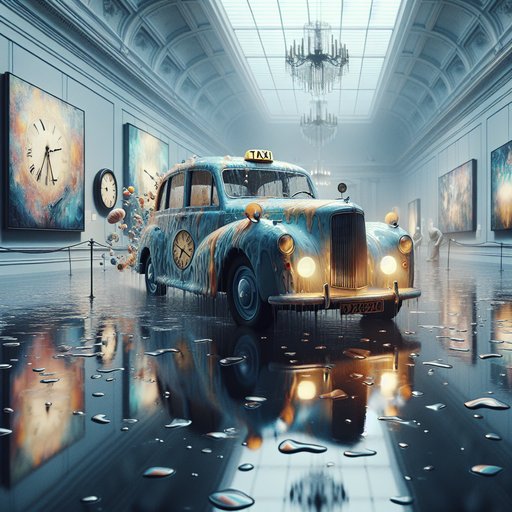
From Catalonia to Florida and Brussels, museums are foregrounding the automobile as a surrealist muse, pairing dreamlike paintings with stagey, rain-soaked cars. The Dalí Theatre-Museum’s enduring ‘Rainy Taxi’ anchors the conversation this season, while the Dalí Museum in St. Petersburg keeps its kin installation running to steady crowds. Centennial surveys in Europe have added historical ballast, revisiting the 1930s when artists first invited vehicles into the unconscious. Together, these shows map how car culture slips from the street into the gallery—part object of desire, part psychological prop—and how curators are using it to bridge art history with contemporary audiences.
At the Dalí Theatre-Museum in Figueres, a vintage cab forever showers its occupants, the water beading across seats while mannequins sit in silence. Dalí’s ‘Rainy Taxi’—first conceived for the 1938 Exposition Internationale du Surréalisme in Paris and later realized as a permanent installation in Figueres—puts the automobile at the center of a controlled hallucination. The car functions as both sculpture and stage, amplifying Surrealism’s interest in chance encounters and altered interiors. On view daily this fall, it remains a lodestone for visitors and a teaching tool for curators tracing how everyday technology became a dream machine.
Across the Atlantic, the Dalí Museum in St. Petersburg maintains ‘Rainy Rolls-Royce,’ an outdoor, audience-activated homage that extends the Paris concept into a Floridian vernacular. The installation, which periodically showers a chauffeured interior, is paired with process notes and archival material that link it to Dalí’s theatrical exhibition-making. Educators fold the piece into tours that move from galleries of paintings to the car itself, underscoring how motifs migrate between canvas and chassis.
The museum reports strong family attendance on weekends, when live demos help translate Surrealism’s playfulness into a tangible, contemporary experience. In Brussels, 2024’s centenary programs marking 100 years since André Breton’s first Surrealist manifesto brought fresh attention to the movement’s automobilized imagery. At the Royal Museums of Fine Arts of Belgium and partner venues, paintings by Belgian and international Surrealists were contextualized with period magazines, posters and photographs in which grilles, headlights and city traffic became uncanny stand-ins for bodies and eyes. Archival material from the 1938 Paris show—including images of Dalí’s taxi—grounded the narrative, helping audiences see how artists staged cars as actors in their mise-en-scène.
The curatorial throughline made clear that the road, as much as the dream, was a site of invention. Earlier precedents have primed today’s appetite. Museum Tinguely’s survey ‘Car Fetish. I drive, therefore I am’ in Basel (2011) placed Surrealist strategies beside postwar film and kinetic art, showing how engines and chrome could trigger reverie and dread in equal measure.
Design-led exhibitions like the V&A’s ‘Cars: Accelerating the Modern World’ (2019) echoed those links, from photomontage to speculative prototypes, even as they broadened the lens beyond Surrealism. Taken together, these projects have encouraged lenders and institutions to pair canvases with car-based installations, a format now paying dividends in audience engagement. This season’s surreal wheels simply make that dialogue impossible to miss.












